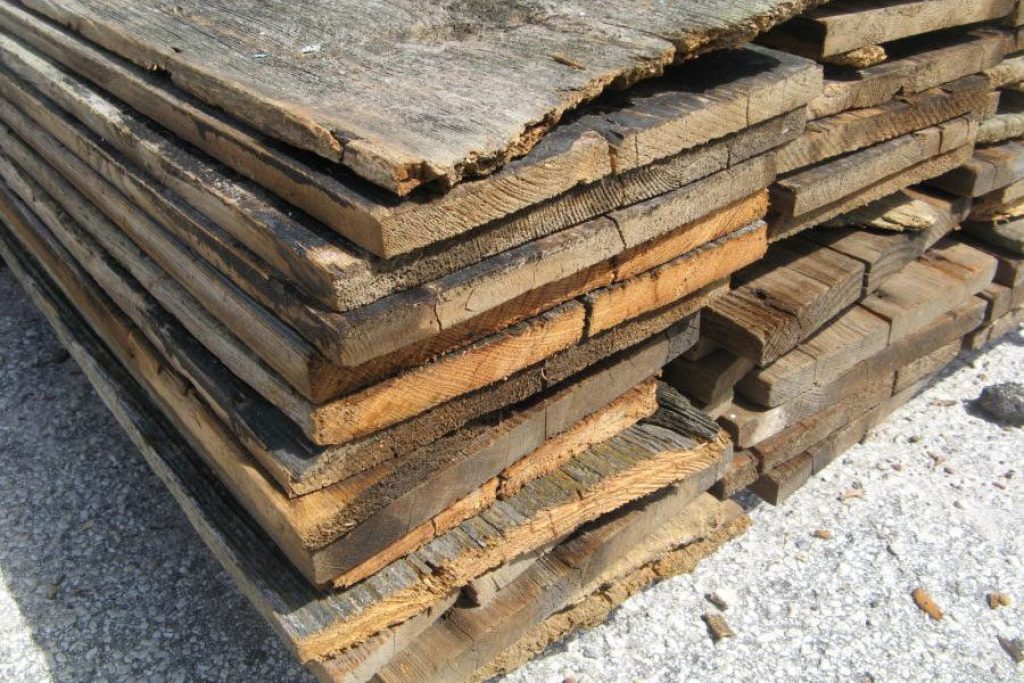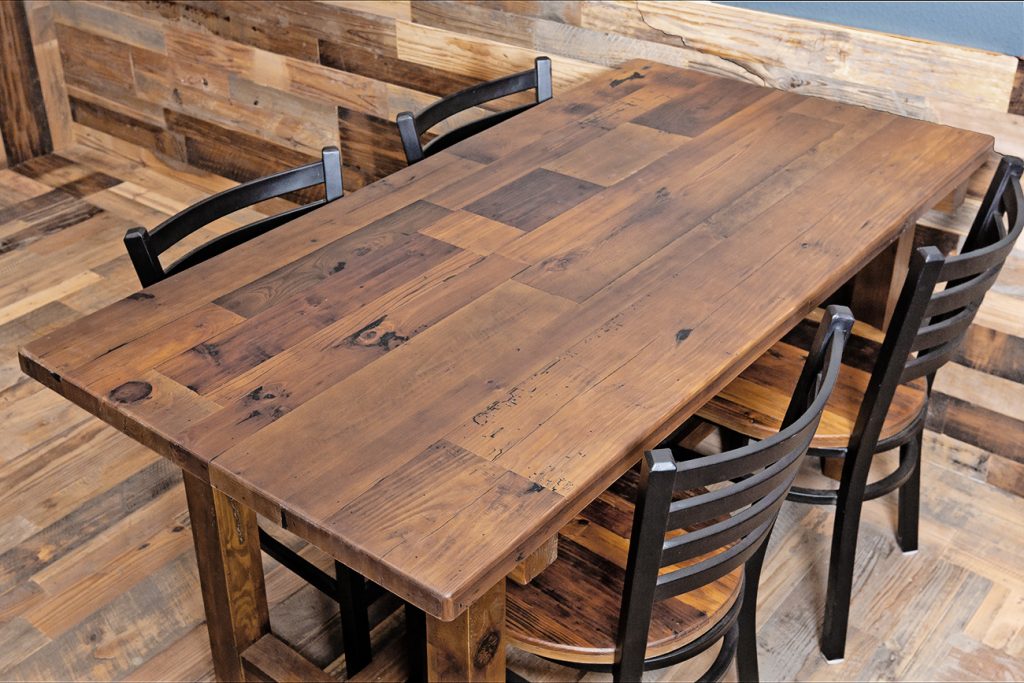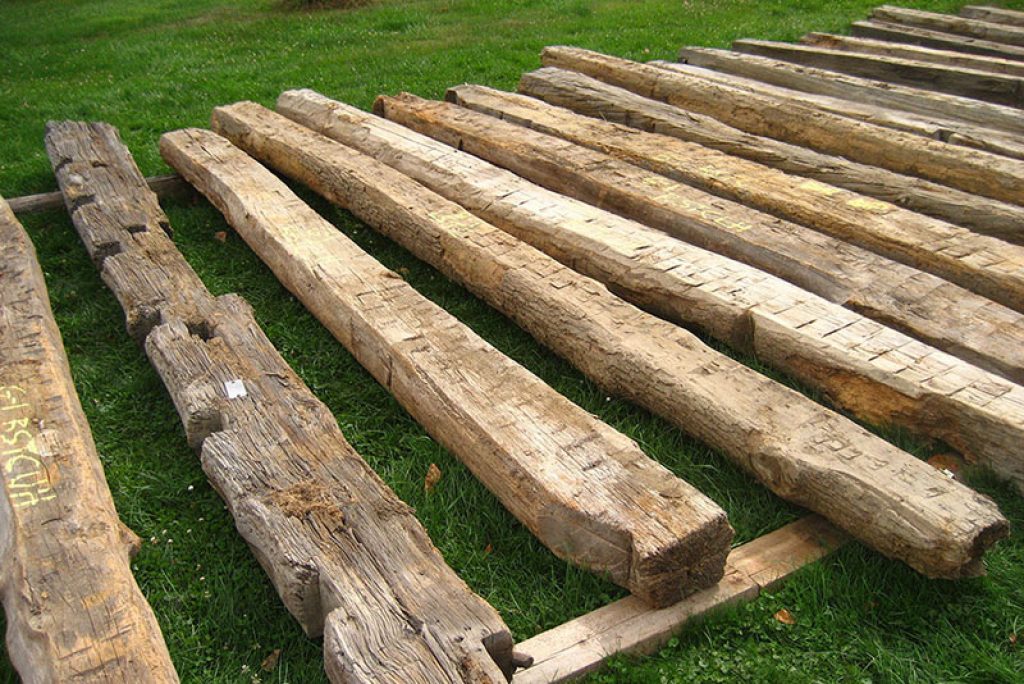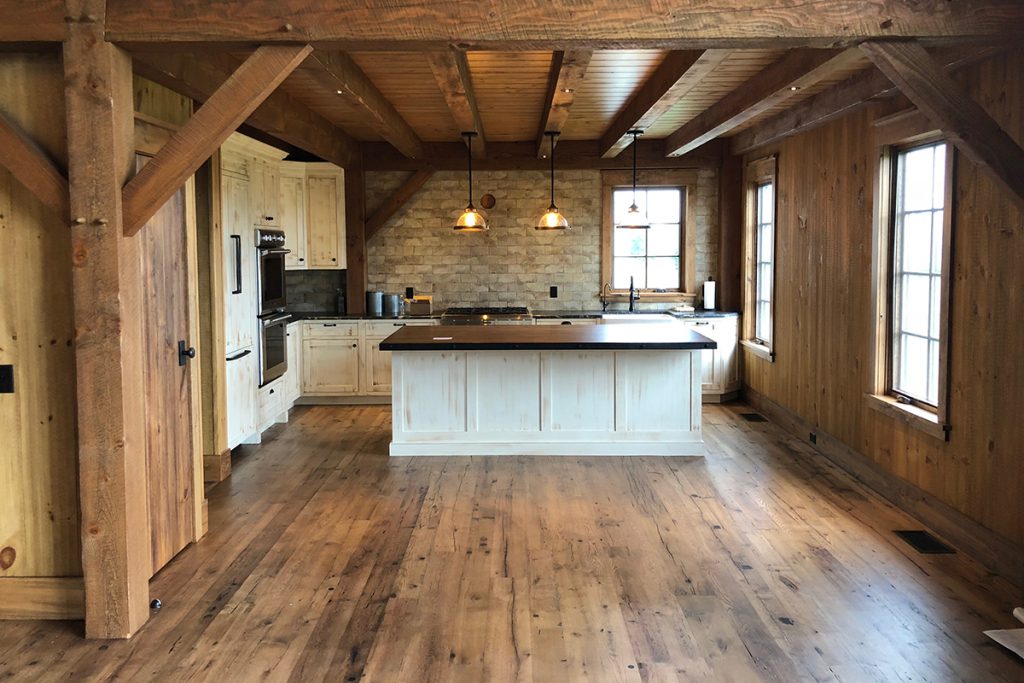
As a building material, reclaimed wood is becoming more popular every day.
Its charming looks and the history behind it make the material a trendy choice for all kinds of interiors, from luxurious offices to cozy eco homes.
Still, it is much more than a fashionable design choice.
We live in challenging times where environmental concerns are becoming part of our everyday lives.
Terms such as ecological, green, and sustainable have not only entered the most important contemporary construction discourses but become a necessity of our time.
The building industry and its environmental impact are being constantly assessed, materials and their behavior studied, and the importance of the “3 Rs” – recycle, reuse, reduce highlighted.
Building materials reclaimed during processes of deconstruction are considered to be environmentally friendly as they reduce emissions of greenhouse gases. This is in stark contrast to the production of new materials.
In this article, you’ll learn all there is to know about this form of wood and how beneficial it truly is.
Affiliate Disclaimer
Table of Contents
What is Reclaimed Wood?
Reclaimed wood is wood that has been salvaged from old structures such as farmhouses, warehouses, factories, etc., and reused for other purposes.
Today’s reclaimed wood mostly relates to the buildings from the 18th to the early 20th century – a period when the use of wood in Europe and North America flourished.
Why Do People Use Reclaimed Wood?

There is a growing ecological crisis on our hands. As such, there is ongoing research taking place to find new ways of introducing wood into architectural designs.
Reclaiming and repurposing old wood has become a very popular choice, mostly due to its environmentally friendly characteristics.
Preserving the environment
Here’s how this repurposed wood helps the environment:
- By using repurposed wood, you’re minimizing the need for deforestation. As such, the demand for freshly harvested wood declines.
- Harvesting new wood requires a ton of energy whereas reclaiming wood requires a lot less energy. To be more specific, reclaiming wood is at least 10x more energy efficient than producing new wood.
- If you use repurposed wood for your flooring or wall panels, you’ll have great sources of insulation. This will make your space more energy efficient.
- With responsible harvesting, salvaged wood can become a renewable resource that at the same time reduces landfill waste and prolongs the life cycle of the material.
Unique beauty and history
Repurposed wood has a unique and original aged appeal. Each piece is one of a kind, so architects and designers are happily using it to create interesting spaces.
Wood salvaged from farmhouses, old buildings, railways, and ships tells a story of past times bringing history into contemporary interior design.
Strength, stability, and durability
Besides its environmental, aesthetic, and ethical benefits, architects and designers recommend reclaimed wood because it’s stronger, more stable, and more durable than newly produced wood.
In fact, the Janka hardness scale rates it 40 points harder than new wood.
5 Ways to Use Reclaimed Wood in Your Home

You can use reclaimed wood in a variety of ways. Most of the time though, you’ll use it for flooring, wall panels, and different kinds of furniture.
1. Flooring
Most people use reclaimed wood – made from old wooden beams and timber frames – for their flooring.
There are numerous advantages to making floors from reclaimed wood. Some of these include:
- Wider and longer floor planks.
- Unique aesthetic.
- High durability.
- Quality insulation.
2. Wall panels
You can use reclaimed wood for all of your wall panels, or just to accent certain sections, depending on your desired effect. Reclaimed wood wall panels will not just elevate your interior aesthetics, they are also good thermal and sound insulators and are very maintenance-friendly.
3. Interior doors
Repurposed wood is great for interior doors – you can reclaim old barn or warehouse doors for this purpose. What’s more, you can use reclaimed wooden doors as screen dividers, wardrobes, or even decorations.
4. Cabinets
Are you looking to add new cabinets to your kitchen? Reclaimed wood is just the material for the job.
5. Furniture
You can an assortment of furniture from reclaimed wood such as dining tables, coffee tables, shelves, etc. These unique pieces of furniture will bring accents to the interior and sometimes even become its central pieces.
Is Reclaimed Wood Durable?

Repurposed wood is substantially stronger than newly harvested wood.
The main reason for this is that it’s already been exposed to multiple hot and cold atmospheres, so much so that it’s done all the expanding and contracting it’ll ever need to do.
Essentially, the wood is completely dried up, making it less likely to split. Lastly, the grain tends to be thicker in repurposed wood making any warping, less likely to happen.
Is Reclaimed Wood More Expensive?
Reclaimed wood can be rather expensive ($5 – $30 per square foot). Its price depends on factors such as wood type, wood age, source of the wood, availability of the wood, and the type of product the wood is being repurposed for.
However, two factors contribute to these high prices more than any others. These are:
- There is a limited supply of aged wood.
- Repurposing requires high skilled labor.
In summary, salvaged wood costs more than newly manufactured wood, but its durability and low maintenance decrease the general upkeep costs in the future.
What is the Average Cost of Reclaimed Wood?
As previously mentioned, the cost of repurposed wood varies and is primarily related to the final product type.
In general, the average cost of reclaimed wood is between $5 and $30 per square foot (this excludes labor costs).
If the wood is very old, rare, or exotic, the prices can be even higher.
Reclaimed Wood Product Price Examples:
- Reclaimed wood flooring is the most popular and costs between $8 and $15 per square foot, for both material and installation (the price depends mostly on the quality of the wood).
- Wall panels made out of repurposed wood cost between $5 and $8 per square foot (including installation).
- Reclaimed doors cost between $300 and $1000 on average.
Does Reclaimed Wood Require Lots of Maintenance?
Every kind of wood requires sufficient maintenance and care.
The type of maintenance depends on the actual wood product and the level of its use.
- You’ll need to resand and refinish your salvaged wood floors every 10 – 20 years.
- Renew your reclaimed wood wall panels, doors, furniture, etc, every 10 – 15 years depending on the frequency and type of their usage.
Does Using Reclaimed Wood Add Value to Your Home?
Yes, reclaimed wood will increase the value of your home. If you purchase reclaimed wood worth $9 per sq ft for a 2000 sq ft home you could expect to pay about $18,000. However, you can expect your home to increase in value by around $13,500, making the actual payment only $4,500.

Besides the financial benefit and aesthetic appeal, a home using wood that has been salvaged is also a home with a much lower carbon footprint. Knowing that your choice of materials was a small step towards decreasing deforestation, surely adds some ethical value to your life as well.
Is Reclaimed Wood FSC Certified?
The Forest Stewardship Council or FSC is an international organization for the improvement of forestry across the world. It awards certification to the industries devoted to responsible forest management, certifying timbers and products.
FSC certification of reclaimed wood is relatively new and currently only applies to the so-called “post-consumer” reclaimed wood – wood that’s previously been used by consumers in old industries, warehouses, barns, and other buildings.
“Pre-consumer” salvaged wood such as the one retrieved from landfills is not yet under the FSC certification process.
Final thoughts
The importance of reclaimed wood is growing, as are the possibilities for its reclaiming. We live in a time marked by rapid urbanization and fast construction.
Numerous buildings and structures are being either abandoned or demolished. Migrations from the countryside to towns and cities are leaving empty homes and farms to slowly decay.
Instead, materials such as wood can be salvaged from these structures and later upcycled and repurposed.
The important issue here is finding a proper balance between the reuse of materials and elements as ecologically responsible behavior and preservation of our cultural heritage.
Even though this type of wood is limited it can easily become a true renewable material, prolonging its life cycle and decreasing our overall environmental footprint.









